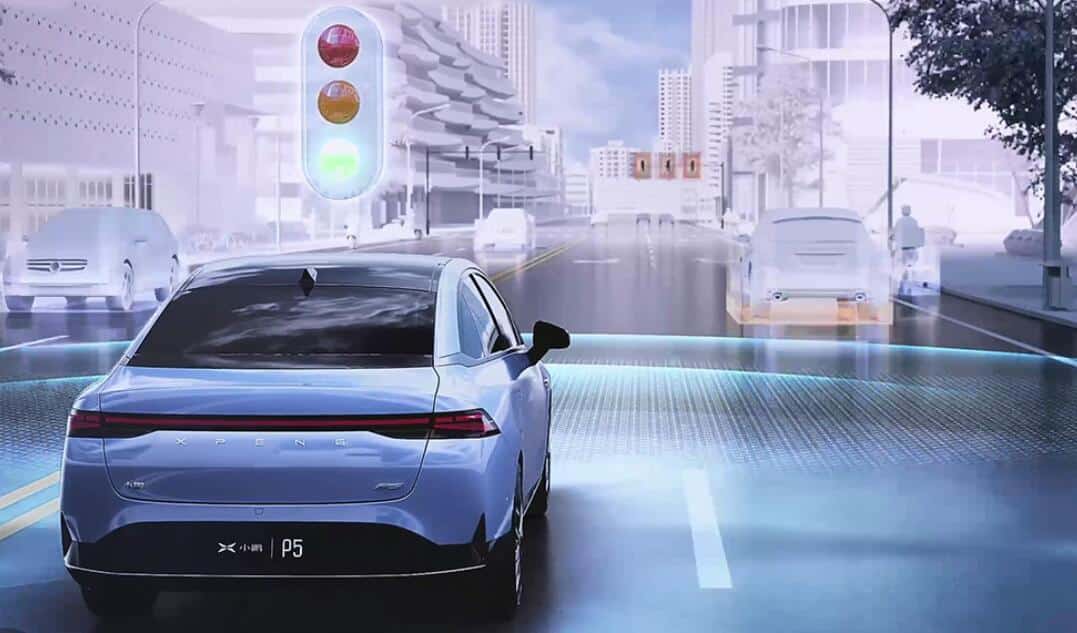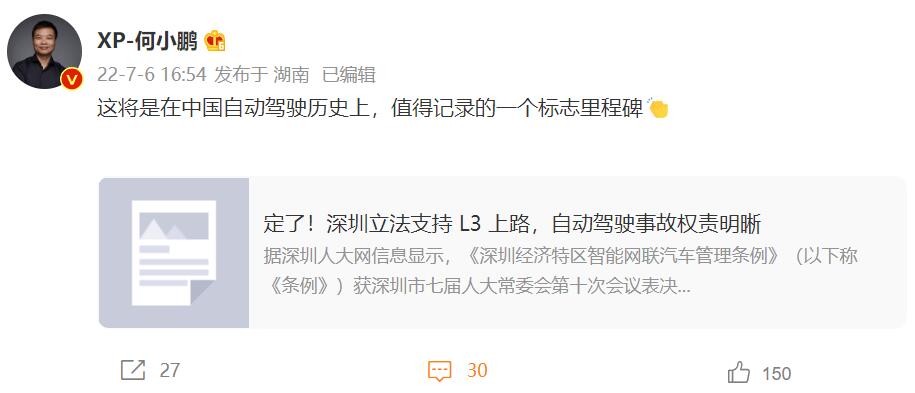Update: Added comments from Xpeng Chairman and CEO He Xiaopeng.
The regulations will take effect on August 1, marking a breakthrough in autonomous driving legislation in China.
(Image credit: Xpeng)
An important limiting factor for the development of higher levels of autonomous driving is regulations. Shenzhen, a mega-city in South China, has just seen a breakthrough in this area.
An announcement today from the Standing Committee of Shenzhen's Seventh People's Congress shows that the city's lawmakers passed a local regulation on smart connected vehicles, which will come into effect on August 1.
This is China's first regulation on the management of smart connected vehicles, which specifies that vehicles listed in the regulatory catalog can be driven on the road after they are registered with the authorities.
The regulation divides autonomous driving into three types: conditionally automated driving, highly automated driving and fully automated driving.
Smart connected cars with conditionally automated driving and highly automated driving should have a manual driving mode and corresponding devices with a driver.
Fully automated driving smart cars may not have a manual driving mode and corresponding devices, and may not be equipped with a driver.
However, fully automated driving cars without a driver can only be driven in areas and sections designated by the authorities.
The regulation's classification of autonomous driving levels uses the Chinese definition of driving automation levels that came into effect in March of this year.
The SAE International definition is currently used by the Chinese public for the description of autonomous driving capability. If a vehicle has an L3 level of autonomous driving capability it means that the driver does not need to drive the car.
Although not explicitly mentioned in the regulation, conditionally automated driving and highly automated driving capabilities are equivalent to the L2 assisted driving capability currently touted by mainstream car manufacturers, while fully automated driving is equivalent to L3 autonomous driving capability.
In order to avoid a significant impact on the current road traffic order and to eliminate public concerns, the regulation mentions some details in this regard.
Producers of smart connected vehicle products should configure the vehicle with an external indicator light for autonomous driving mode, and the car should turn on the external indicator light when driving in autonomous driving mode to give obvious safety alerts to other vehicles and pedestrians on the road.
Notably, Li Auto's (NASDAQ: LI, HKG: 2015) Li L9 SUV, which was launched on June 21, is already equipped with autonomous driving indicator lights.
The regulation also clarifies the driver's obligation to take over:
The driver of a smart connected vehicle with conditionally automated driving and highly automated driving shall take over the vehicle immediately when the automated driving system makes a request.
The regulation also clarifies the division of responsibility in the event of a traffic accident:
In the case of a driver being present, current road traffic safety laws and regulations apply.
If a traffic accident occurs during the period without a driver and the responsibility lies on the side of the vehicle, the vehicle owner or manager shall bear the liability.
The regulations are expected to encourage Chinese smart electric vehicle companies to accelerate their use of autonomous driving technology, specifically Guangzhou-based Xpeng Motors (NYSE: XPEV, HKG: 9868), which is awaiting regulatory approval to put its City NGP (Navigation Guided Pilot) feature into use.
On June 27, top Chinese investment bank CICC said in a research note that the market is not fully aware of the pace and experience of mass production of Xpeng's City NGP feature, saying that updates on the feature's progress are expected to be a central catalyst for its stock price to rise.
Commenting on the news on Weibo, Xpeng Chairman and CEO He Xiaopeng said it would be a milestone worth noting in the history of autonomous driving in China.


